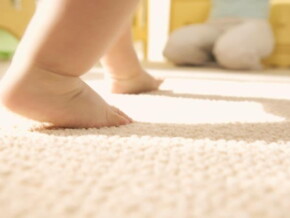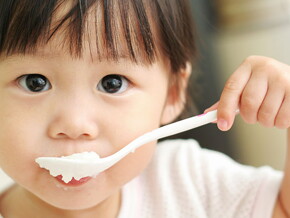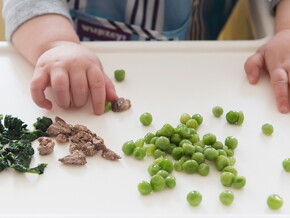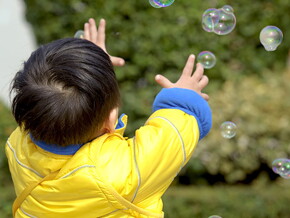
How to Protect Your Active Toddler from Extreme Heat in the Philippines
Parenting in a hot climate can add to your stress levels! But your kids rely on you even more during these warmer days. Here's the TLC they need.
Who hasn't noticed how much summers keep getting hotter and hotter every year? PAGASA has recorded scorching heat indices from 42ºC to 55ºC! Extreme heat in the Philippines has caused disruptions before the official summer started in 2025. Schools had to suspend classes in the first week of March 2025 as temperatures soar past 40ºC.
With temps this brutal, keeping your kids cool and safe will be extra challenging. But don't worry, we've got you covered! This handy guide can help keep your active toddler safe and comfortable kahit sobrang init!
How Extreme Heat Affects Toddlers
Children's bodies react differently to heat than adults. The younger they are, the harder it is for their bodies to cool down—which means babies and toddlers overheat much faster than adults. A study published in the Journal of Thermal Biology put this to the test.
Researchers had 34 kids (six months to eight years old) sit in a cool room (27°C) for 30 minutes. Then, the children were moved to a hotter, more humid room (35°C) for another 30 minutes before bringing them back to the colder space.
The results? Younger kids' internal body temperatures rose more quickly, and while all the kids sweat, babies and toddlers didn't sweat as efficiently as the older ones. This puts young kids at a higher risk for overheating.
Signs of Overheating in Toddlers
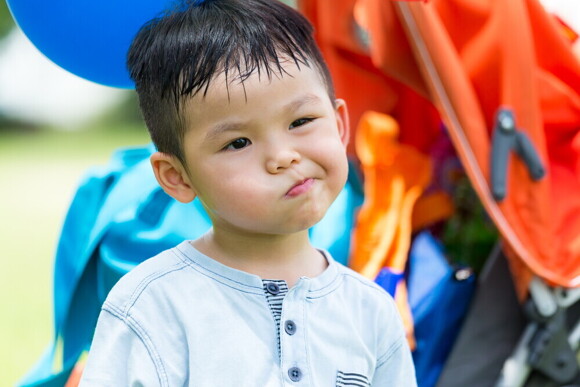
Because their bodies are still growing and developing, your babies and toddlers can overheat faster than we might realize. They can also seem fine at first, and that's why it's super important to watch out for these overheating signs according to pediatricians:
Heat Rash
Also known as prickly heat or bungang araw, heat rash can feel itchy and appears as tiny pink bumps on sweaty areas like the neck, upper back, and chest.
Heat Cramps
These sudden, uncomfortable muscle spasms are the body's way of saying, "Hey, I need a break and some water!" Heat cramps can be painful, but they usually go away once your little one rests, cools down, and drinks plenty of fluids.
But here's the thing: Heat cramps can also be an early warning sign of something more serious, like heat exhaustion.
Dehydration
Kids get so caught up in playing that they often forget to drink water and might not even realize they're thirsty! Running around in the heat can make them lose fluids even faster, which is why dehydration can sneak up on them.
Keep a look out for signs of dehydration in babies like fewer wet diapers, a dry mouth, no tears when crying, or unusual tiredness.
Heat Exhaustion
Your toddler may feel cranky or unusually fussy if they have heat exhaustion. Other symptoms include:
- Heavy sweating
- Clammy skin
- Dizziness
- Nausea or vomiting
- Rapid breathing
- Extreme thirst
If you notice these signs, immediately move your child to a cooler space, get them fluids, and gently cool their skin with a damp cloth. Heat exhaustion can turn into heatstroke, so if symptoms get worse, seek medical help immediately.
High Fever
Heat reactions like exhaustion can come with mild fever for a short time. But a fever temperature higher than 40.5° C requires emergency medical attention and a sign of heatstroke, which can lead to coma or shock.
The American Academy of Pediatrics (AAP) reports that most kids with heatstroke do not sweat, which makes it even more dangerous. So, seek medical attention right away if your child experiences high fever, confusion, and fainting.
How to Keep Kids Cool in Extreme Heat
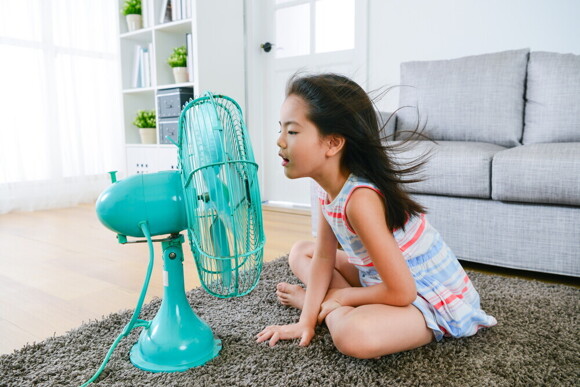
Spotting the signs of overheating can help keep serious heat-related illnesses at bay. But knowing how intense extreme heat in the Philippines can get, you can take precautions already. Here are several ways to keep your little one comfy—whether at home or out and about.
At Home
- Improve air circulation. Try air coolers that produce a cooling mist with water. Close your window blinds during peak hours of heat. But open them during cooler times of the day.
- Choose breathable fabrics. Dress toddlers in lightweight, loose cotton clothes, and replace them when they get soaked in sweat. Use light, moisture-wicking beddings to prevent overheating during naps.
- Hold cool indoor activities. Swap outdoor play with safe indoor fun like water sensory tubs, water-based activities like floating experiments, or arts and crafts like water painting.
- Get your child a water bottle. This way, you can track how much they drink throughout the day.
- Set up a cool-down corner. Find a shaded spot for a table with water sprays, wet wipes, and a large water pitcher. Place it in the play area to nudge them to drink water.
Outdoors
- Avoid peak heat. Limit outdoor play between 11 a.m. and 3 p.m. But always opt for safe indoor play if temperatures exceed 35°C or anytime it feels hotter due to high humidity.
- Seek shade. Choose areas such as parks with shady trees or covered playgrounds. If possible, pick a location near a mall or an airconditioned establishment for you to pop in should you need to cool off.
- Dress for protection. Apart from breathable clothing, let your toddler wear a hat and apply toddler-safe sunscreen to exposed areas.
- Bring a wet towel. Place it on your child's neck, head, or armpits to help cool them down if necessary.
- Schedule hydration breaks. It’s easy to lose track of time when you’re busy with your toddler. Set a timer for every 30 minutes to remind both of you to drink some fluids!
Nutrition Tips to Keep Toddlers Cool
Food can help a lot to help your toddler cope with the heat! Keep your toddler hydrated and nourished with these tips.
- Make drinking water fun. Use colorful cups and straws, or add fruit-flavored ice cubes! You can also ask your child to pick their own water bottle. It gives them a sense of ownership and motivates them to drink more!
- Offer hydrating snacks. Fruits and vegetables with high water content watermelon, citrus fruits, and cucumber, can help replenish fluids.
- Make smoothies without ice. Freeze bananas, strawberries, mango, or melon slices. Toss one or a combo of fruits in the blender, and blend until smooth! Add milk or yogurt (or both!) to make the smoothie richer.
- Prepare light and energizing meals. Avoid greasy or heavy foods that strain digestion during extreme temps.
Find Relief in the Heat
Extreme heat in the Philippines doesn't have to stop your toddlers from enjoying playtime. We just have to be extra mindful about creating a cool environment, practicing safe hydration, and being aware of heat-related illnesses.
Knowing the right precautions can ease your stress and give you the confidence to handle different situations. More importantly, your toddlers remain happy, active, and safe.
Connect with other parents on our ParentTeam Facebook group and share your life hacks foe beating the heat!
References
British Red Cross. “Beat the Heat: Top Tips for How to Keep Cool in Hot Weather,” n.d. https://www.redcross.org.uk/stories/health-and-social-care/first-aid/beat-the-hot-weather-top-tips-for-staying-cool.
HealthyChildren.org. “How to Keep Young Athletes & Active Kids Safe in Hot Weather,” n.d. https://www.healthychildren.org/English/health-issues/injuries-emergencies/sports-injuries/Pages/Exercise-Related-Heat-Illness.aspx.
Flores, Helen. “PAGASA Warns of Scorching Heat in May.” Philstar.Com, March 10, 2025. https://www.philstar.com/headlines/2025/03/11/2427462/pagasa-warns-scorching-heat-may.
“Heat Illness (for Parents),” n.d. https://kidshealth.org/en/parents/heat.html.
Mendoza, Jason Sigales John Eric. “LGUs Order Class Suspension, Online Learning Shift.” INQUIRER.net, March 7, 2025. https://newsinfo.inquirer.net/2041467/list-lgus-order-class-suspension-online-learning-shift-due-to-extreme-heat.
Tsuzuki, Kazuyo. “Effects of heat exposure on the thermoregulatory responses of young children.” Journal of Thermal Biology 113 (February 17, 2023): 103507. https://doi.org/10.1016/j.jtherbio.2023.103507.










